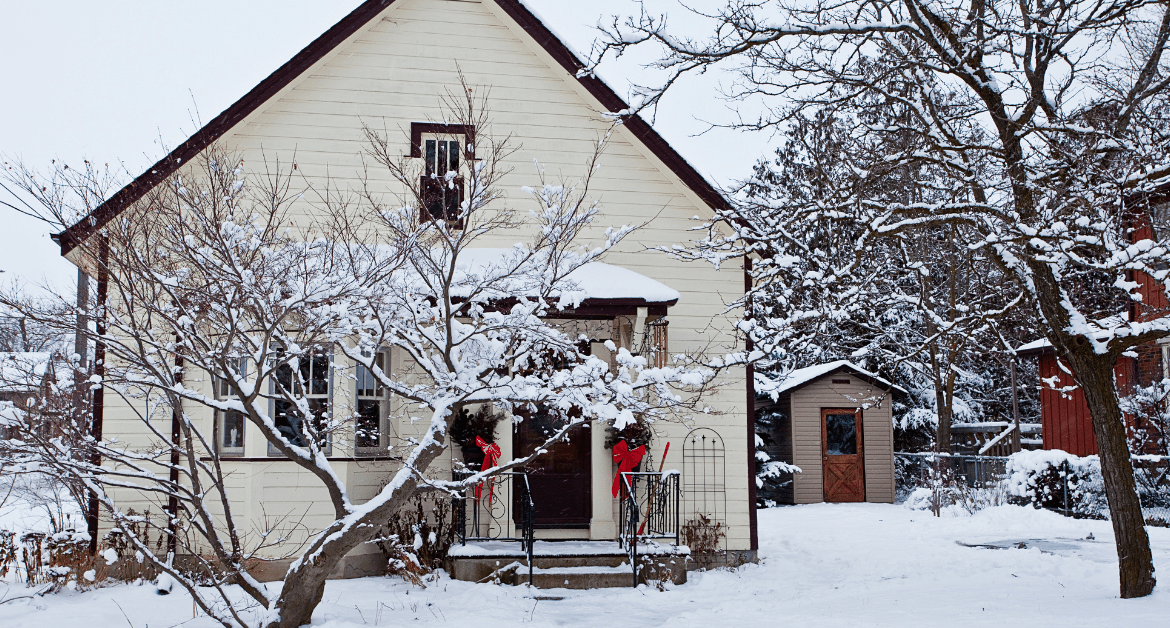
Winterize your home, Moving is stressful enough without also having to worry about winterizing your home. But taking time to prepare your home for freezing temperatures and snow before you move out can prevent headaches down the road. A well-winterized home will stay safely maintained while unoccupied and allow the new owners to move right into a cozy, damage-free refuge from the cold. Follow these key steps to fully winterize your home prior to a winter move.
Inspect and Service Your Furnace
Before the cold weather hits, it’s important to have your furnace inspected and serviced by a professional. They can check for issues and make any necessary repairs to ensure your furnace is in good working order. Replace filters and check ductwork for leaks too. This will maximize efficiency and prevent problems down the line.
Insulate Pipes, Faucets, and Vents
Exposed water pipes are prone to freezing in frigid temps. Insulate them with store-bought foam tubes or fiberglass insulation. Seal any leaks around faucets and showerheads with caulk. You can also install freeze-proof outdoor faucets. For vents, use foam vent seals to keep cold air out of your home.
Weather-Strip Doors and Windows
Over time, seals around doors and windows can become brittle or warped. This allows cold drafts to penetrate your home, raising energy costs. Replacing worn weather stripping and caulk helps keep the cold air out and warm air inside. Consider storm doors or plastic window insulation for added protection.
Read: How Technology is Revolutionizing the Pet Travel Industry
Have Chimneys and Fireplaces Cleaned
Before building cozy fires, you have to winterize your home. Creosote buildup poses a fire hazard. Also, ensure dampers are working properly. For gas fireplaces, schedule professional maintenance before use. And remember to open the flue before lighting!
Check Your Roof
Snow, ice dams, and wind can damage shingles over time. Scan for cracked, missing, or curling shingles and repair as needed. Trim overhanging branches too. Consider sealing any leaks around skylights or vents. A little preventative care can prevent major headaches later.
Examine Siding and Trim
Look for areas where water could penetrate exterior walls, like cracked or peeling paint. Repair and repaint as necessary. Use caulk and weather sealing around windows, doors, corner boards, and where siding meets the foundation. This fortifies the outer shell of your home.
Turn off the Exterior Water Supply
Locate the exterior shut-off valve for your water supply and turn it off prior to freezing temps. Disconnect and drain exterior hoses too. This prevents pipes from bursting and flooding if temps dip unusually low while you’re away. Don’t forget to turn the water back on upon your return!
Schedule a Professional Inspection
For added peace of mind, arrange for a qualified home inspector to assess your home prior to winter. They can identify maintenance issues you may have overlooked and provide a detailed list of steps to winterize your home. Having a professional assessment can help safeguard your investment.
You may like: Flying with Pets vs Ground Transport
Document the Condition of Your Home
Create a record of your home’s condition before leaving. Take photos of the interior and exterior, including appliances, fixtures, floors and walls. Save appliance manuals for the new owners too. This documentation protects you if any damage or issues arise after you vacate but before the new owners take possession.
Adjust the Thermostat and Water Heater
Program your thermostat to maintain a reasonable temperature while you’re away. Set it low enough to prevent pipes from freezing but high enough to avoid excessive energy bills. Also, turn your water heater down to the lowest setting or off completely. This saves energy and minimizes the risk of leaks.
Preparing your home for winter before a move takes time and diligence. But following these key steps will ensure your plumbing and HVAC are winter-ready, prevent weather damage, and give the new owners peace of mind. With your home buttoned up for the season, you can focus on your move stress-free.

 800-13-7356
800-13-7356
